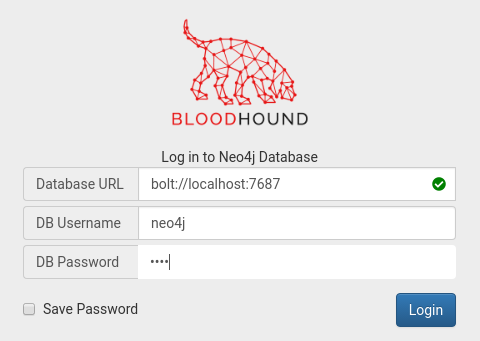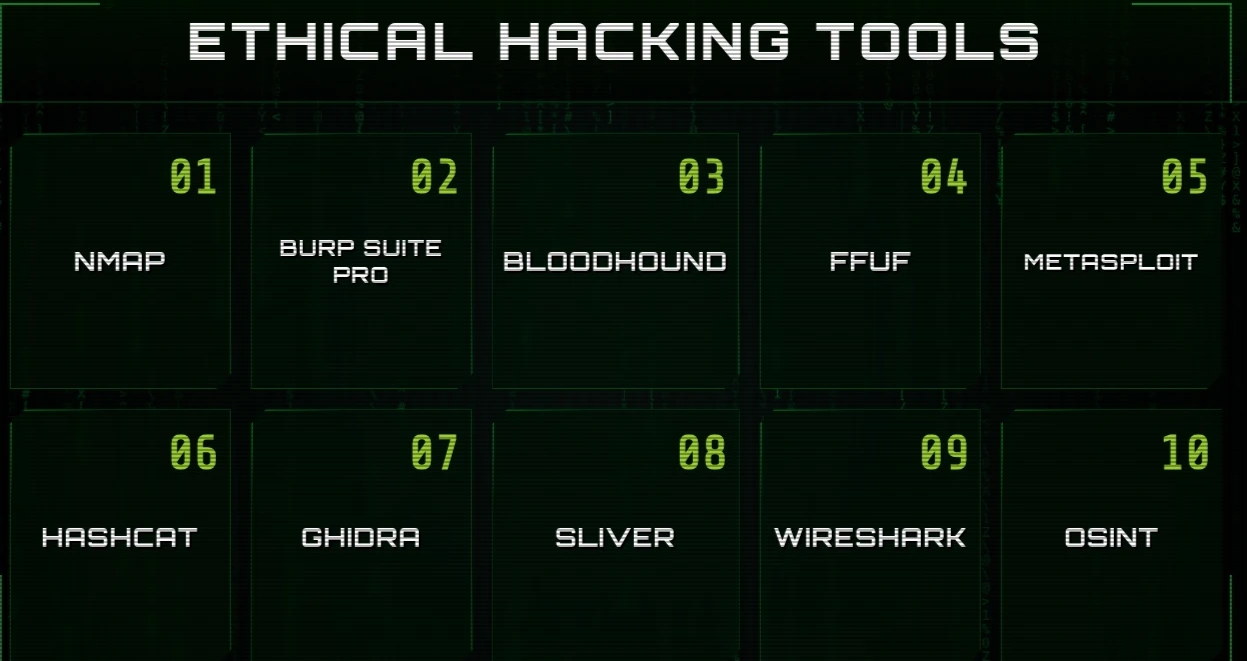Scripts and tools act as efficiency accelerators in the field of information security. However, before deploying them, it is critical to understand the objective.
Ethical hacking, often referred to as white-hat hacking or penetration testing, is the authorized practice of bypassing system security to identify potential data breaches and threats in a network. Unlike malicious hacking, this process is planned, approved, and legally sanctioned to improve the security posture of an organization.
While manual verification is impractical for large-scale time-sensitive assessments, properly tuned industry-standard tools are required to secure access effectively.
Introduction to Ethical Hacking Course
Learn the fundamentals of ethical hacking, including techniques, tools, and ethical hacking domains. Understand how to protect systems from malicious hackers through hands-on demonstrations.
Here are 10 tools and practices considered essential for comprehensive security assessments, including their definitions and expert applications.
1. Nmap (Network Mapper)
Nmap is an open-source utility for network discovery and security auditing. It determines what hosts are available on the network, what services (application name and version) those hosts are offering, and what operating systems they are running.
Running a basic scan without the Nmap Scripting Engine (NSE) significantly limits the tool's utility. Standard operating procedure involves using -sC for default scripts and -sV for version detection. However, the advanced utility lies in specific categories like vuln for vulnerability detection or auth for credential testing.
During internal network assessments, standard discovery often triggers Intrusion Detection Systems (IDS). Mastering timing templates (-T) and packet fragmentation (-f) is necessary to remain undetected. The goal is to determine not just which ports are open, but why they are exposed.
2. Burp Suite Professional
Burp Suite is an integrated platform for performing security testing of web applications. It acts as a proxy between the browser and the target application, allowing for the interception, inspection, and modification of traffic.
The Proxy and Repeater components facilitate the majority of manual testing. This allows for the capture of requests and the modification of headers and payloads to observe server responses. The Intruder tool is essential for brute-forcing endpoints or fuzzing parameters.
However, advanced usage involves writing custom BApp extensions in Python or Java. If an application utilizes custom encryption or XOR encoding on the frontend, an extension must be written to decode traffic within Burp, enabling the testing of raw payloads.
3. BloodHound
BloodHound is a single-page JavaScript web application, built on top of Linkurious and Neo4j, used to analyze Active Directory (AD) relationships. It uses graph theory to reveal the hidden and often unintended relationships between users, groups, computers, and permissions.

Data is gathered using a collector (such as SharpHound) and ingested into the Neo4j database. This reveals lateral movement paths that are difficult to identify manually.
For instance, a standard user might possess "ForceChangePassword" rights over a target who is a Domain Admin. BloodHound renders this abstract permission chain into a concrete attack path, visualizing the shortest route to domain dominance.
4. Ffuf (Fuzz Faster U Fool)
Ffuf is a fast web fuzzer written in Go. It is used for web enumeration tasks such as directory discovery, virtual host scanning, and parameter analysis.
Ffuf has largely superseded older tools due to its ability to handle high concurrency efficiently. It is heavily utilized for parameter fuzzing. If an API endpoint appears static, ffuf can be used with a large wordlist to identify hidden parameters (such as debug=true or admin=1).
The tool's filtering capabilities, specifically -fc to filter by status code and -fs by response size, are critical for isolating valid responses from general network noise.
5. Metasploit Framework (MSF)
The Metasploit Framework is a penetration testing platform that enables the writing, testing, and execution of exploit code. It contains a comprehensive suite of tools for executing attacks against remote target machines.
While often associated with basic exploitation, the primary value lies in the meterpreter payload and post-exploitation modules. Once a session is established, Meterpreter facilitates pivoting. It allows for the configuration of a route through the compromised machine to attack internal network segments unreachable from an external position (autoroute).
It also enables the dumping of hashes, screen capture, or the loading of tools like Mimikatz directly into memory, which avoids writing files to the disk and helps evade antivirus detection.
6. Hashcat
Hashcat is an advanced password recovery utility. It is designed to reverse password hashes, encrypted representations of passwords, back into plaintext using brute-force and dictionary attacks.
When a database is dumped or NTLM hashes are retrieved from an AD environment, recovering the plaintext passwords requires offline cracking. While CPU-based tools handle weak hashing algorithms, Hashcat utilizes GPU acceleration, which is required for stronger formats like WPA2 handshakes or Bcrypt.
Optimization involves tuning "mask attacks." Rather than running a generic wordlist, a mask is configured to attempt only passwords that fit a specific structure (e.g., adhering to a known corporate policy requiring a capital letter, numbers, and symbols). This drastically reduces the computational time required.
7. Ghidra
Ghidra is a software reverse engineering (SRE) suite developed by the National Security Agency (NSA). It includes a variety of tools for analyzing compiled code on platforms including Windows, Mac, and Linux.
When source code is unavailable, such as with compiled binaries (.exe or ELF files), reverse engineering is required to identify vulnerabilities like buffer overflows. Ghidra includes a decompiler that translates machine code (Assembly) back into a high-level representation resembling C code. This allows for the analysis of the program's logic flow, facilitating the identification of functions like strcpy lacking bounds checking or logic errors within authentication mechanisms.
JHU Cybersecurity Certificate Course
Build in-demand cybersecurity skills with JHU experts. Learn AI, cloud, and network security. Hands-on projects. Flexible online format.
8. Sliver (C2 Framework)
Sliver is an open-source, cross-platform adversary emulation/Command and Control (C2) framework. It is used by security professionals to control compromised machines (agents) during a red team engagement.
Sliver acts as a robust alternative to commercial standards like Cobalt Strike. It supports protocols such as Mutual TLS (mTLS), WireGuard, and HTTP(S) for callbacks. It generates binaries that are frequently more difficult for antivirus software to signature than standard Metasploit payloads.
Furthermore, it supports multi-user operator modes, allowing a team of testers to interact with the same agents simultaneously during an engagement.
9. Wireshark
Wireshark is a network protocol analyzer. It captures data packets flowing through a network interface in real-time and displays them in a human-readable format.
Deep packet analysis is required when exploits fail or when network behavior is ambiguous. Wireshark provides visibility into the raw network traffic, allowing for the inspection of the TCP handshake and TLS exchange to pinpoint exactly where a connection is terminated.
It is also used for passive reconnaissance. Listening to broadcast traffic on a local network can identify protocols like LLMNR or NBNS, which are susceptible to poisoning attacks via tools like Responder.
10. OSINT (Open Source Intelligence)
OSINT is the methodology of collecting, analyzing, and using data gathered from publicly available sources (such as social media, public records, and code repositories) for intelligence purposes.
Before active engagement with a target server, the entire digital footprint must be mapped. This involves checking the Autonomous System Number (ASN) to identify IP blocks and reviewing code repositories for leaked API keys or credentials. Additionally, analyzing professional networks (like LinkedIn) reveals the technology stack managed by the target's engineering team.
Knowing the target utilizes specific frameworks (e.g., React Native) directs the testing focus toward relevant vectors, such as mobile API endpoints, making the exploitation phase more targeted and stealthy.






